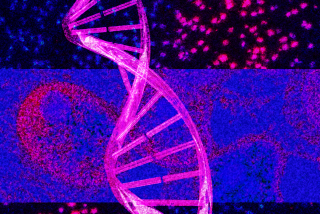FBI is expanding digital ID database
- Share via
CLARKSBURG, W.VA. — The FBI is embarking on a $1-billion effort to build the world’s largest computer database of peoples’ physical characteristics, a project that would give the government unprecedented abilities to identify individuals in the United States and abroad.
Digital images of faces, fingerprints and palm patterns are already flowing into FBI systems in a climate-controlled, secure basement here. Next month, the FBI intends to award a 10-year contract that would significantly expand the amount and kinds of biometric information it receives.
The FBI will also retain, upon request by employers, the fingerprints of employees who have undergone criminal background checks so the employers can be notified if employees have brushes with the law.
“Bigger. Faster. Better. That’s the bottom line,” said Thomas E. Bush III, assistant director of the FBI’s Criminal Justice Information Services Division, which operates the database from its headquarters in the Appalachian foothills.
In the coming years, it is expected that law enforcement authorities worldwide will be able to rely on iris patterns, face-shape data, scars and perhaps even the unique ways people walk and talk to solve crimes and identify criminals and terrorists.
At the same time, increasing use of biometrics for identification is raising questions about the ability of Americans to avoid unwanted scrutiny. It is drawing criticism from those who worry that people’s bodies will become de facto national identification cards.
Critics say that such government initiatives should not proceed without proof that the technology really can pick out a criminal in a crowd.
If successful, the Next Generation Identification system planned by the FBI will collect a variety of biometric information in one place for identification and forensic purposes.
More to Read
Sign up for Essential California
The most important California stories and recommendations in your inbox every morning.
You may occasionally receive promotional content from the Los Angeles Times.












